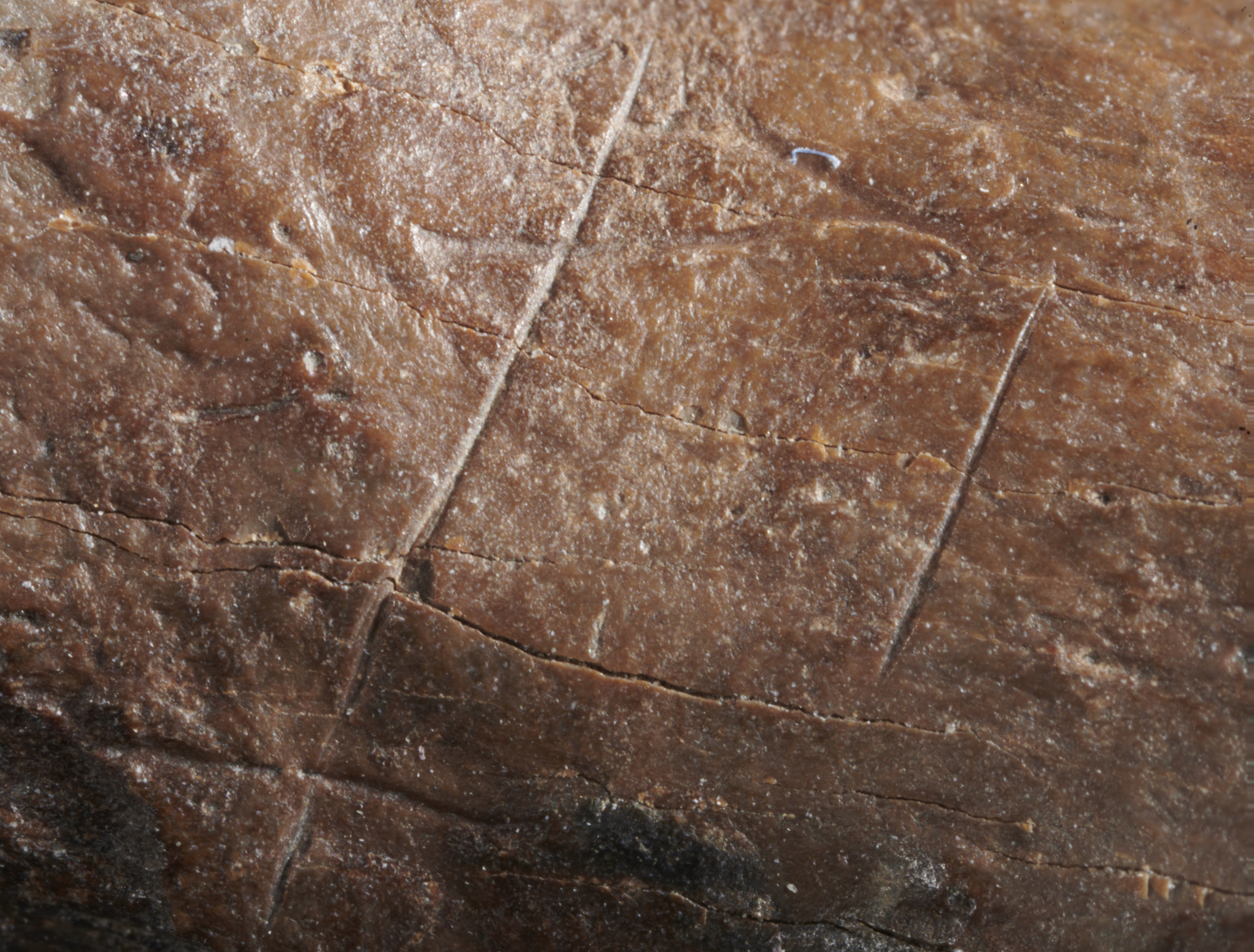
People used bearskins to keep warm 300,000 years ago
Cut marks on the bones of bears show that people in North-West Europe used bearskins to keep warm 300,000 years ago. Archaeologists believe that a metatarsal and a finger bone found in Schöningen in Germany are evidence of prehistoric clothing.

In archaeology, cut marks on bones are often interpreted as evidence for meat consumption. But there is very little meat to be found on the bones of the hands or feet. The fact that cuts have been found on these bones of a cave bear (a large species of bear that lived in the Pleistocene period) indicate that people used the skin of the bear. When skinning an animal, the skin is mainly cut from the skull, and the front and back legs. This is because there is less flesh between the skin and the bones than on other parts of the body, and these are more strongly connected.
The discovery was made by a team of archaeologists, including emeritus Professor Thijs van Kolfschoten and former Leiden student Ivo Verheijen (who now works for the University of Tübingen and the Schöningen Research Museum). They published their study in December in the Journal of Human Evolution.

Evidence that people hunted
The find not only shows that people used bearskins a long time ago, but also indicates that they hunted bears. Verheijen: 'The skin of a bear has to be removed within several hours to a maximum of one day after its death. Otherwise the animal will putrefy, and the skin will split open and the hair will be lost. If the animal was skinned, this is an indication that it cannot have been dead for long at that point. This can then serve as indirect evidence that people hunted.'
Stone tools and the world's oldest spears have also been found in Schöningen. ‘The combination of finding hunting weapons, tools and bones is rather unique,' Van Kolfschoten says. ‘It is a further indication that people hunted. Together, the finds give us a good image of what took place 300,000 years ago.'
Staying warm
And that image is that people in North-West Europe wore clothing. Verheijen: ‘We assume that they didn't walk around naked. At that time, the temperature was roughly the same as today in December. When it is that cold, it simply isn't possible to walk around naked. We have found very few direct indications for clothing, but the cut marks on the bones show that early people probably used bearskins for clothing or to sleep on. I think we can all agree today how important it is to keep warm.'
Excavation site in Schöningen
The bones with the cut marks were excavated some time ago, in 1992 and 2008, in a lignite quarry near the German town of Schöningen. Schöningen is a well-known excavation site where Leiden archaeologists have been going for over thirty years. Van Kolfschoten has been involved in the excavations throughout this time. In an interview with him you can read about four special finds.
-

Metatarsal with cut marks. -

Detail of the cut marks on the metatarsal.
Text: Dagmar Aarts
Photos: Volker Minkus
Illustrations: Benoît Clarys
